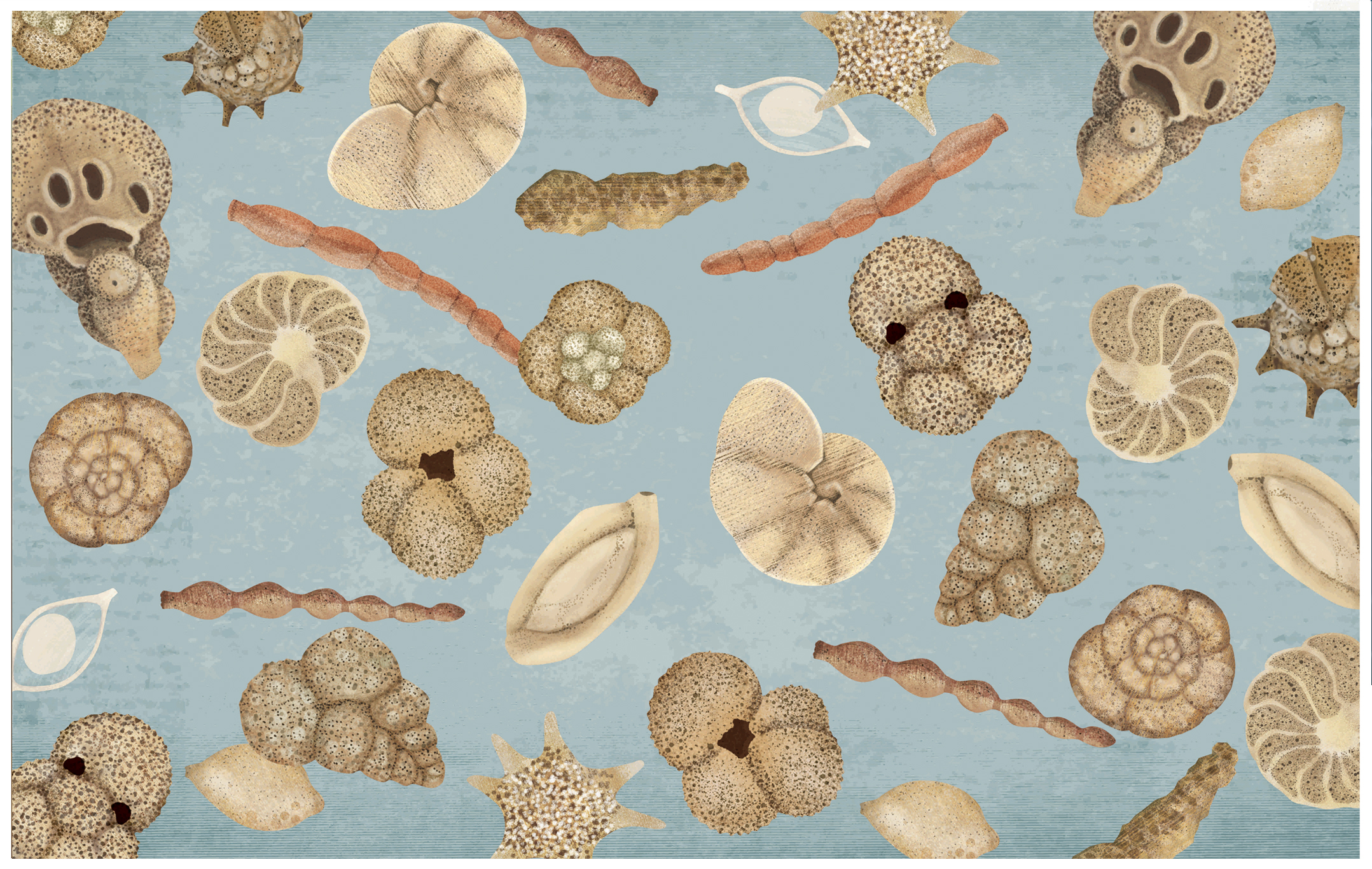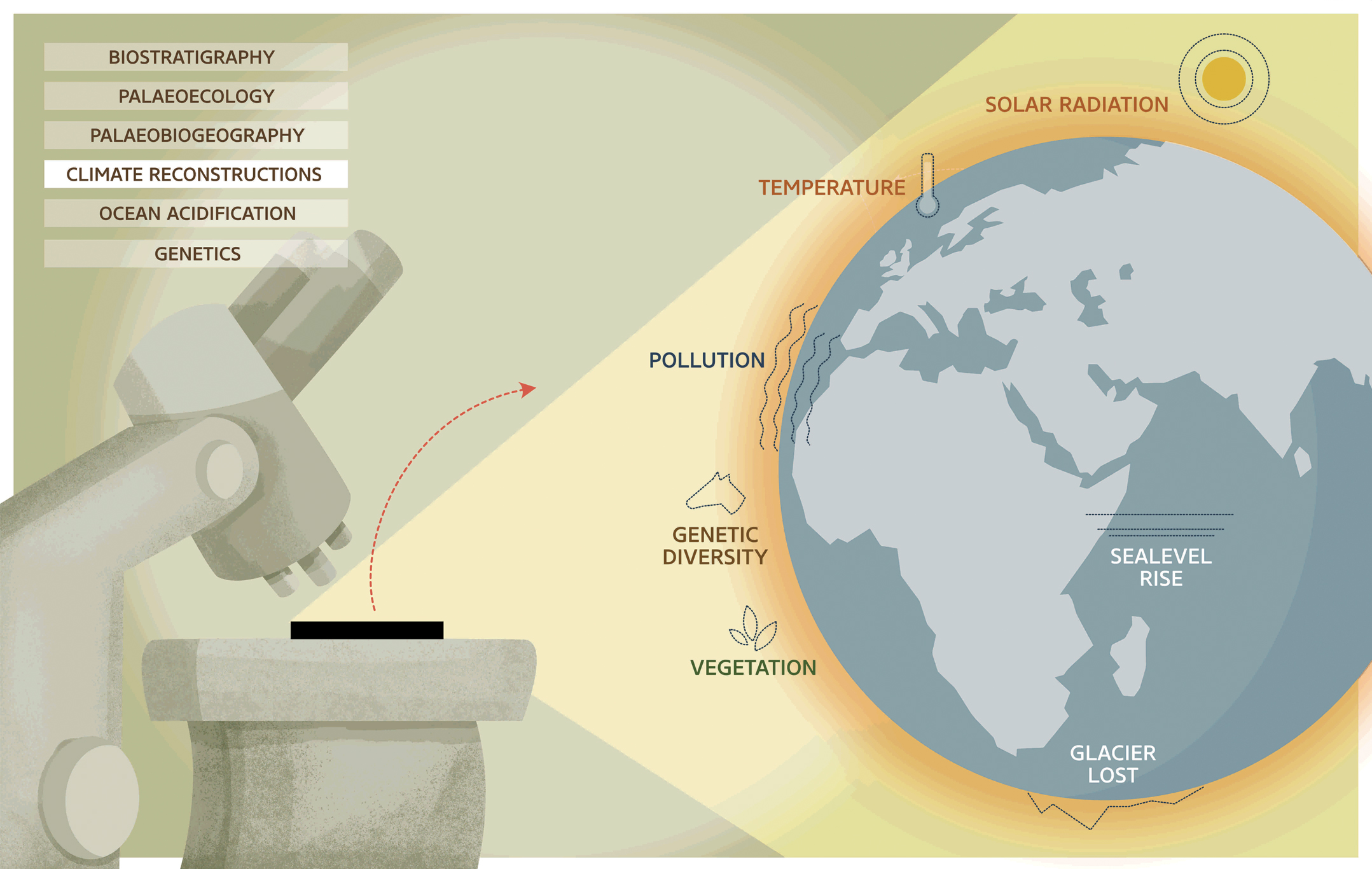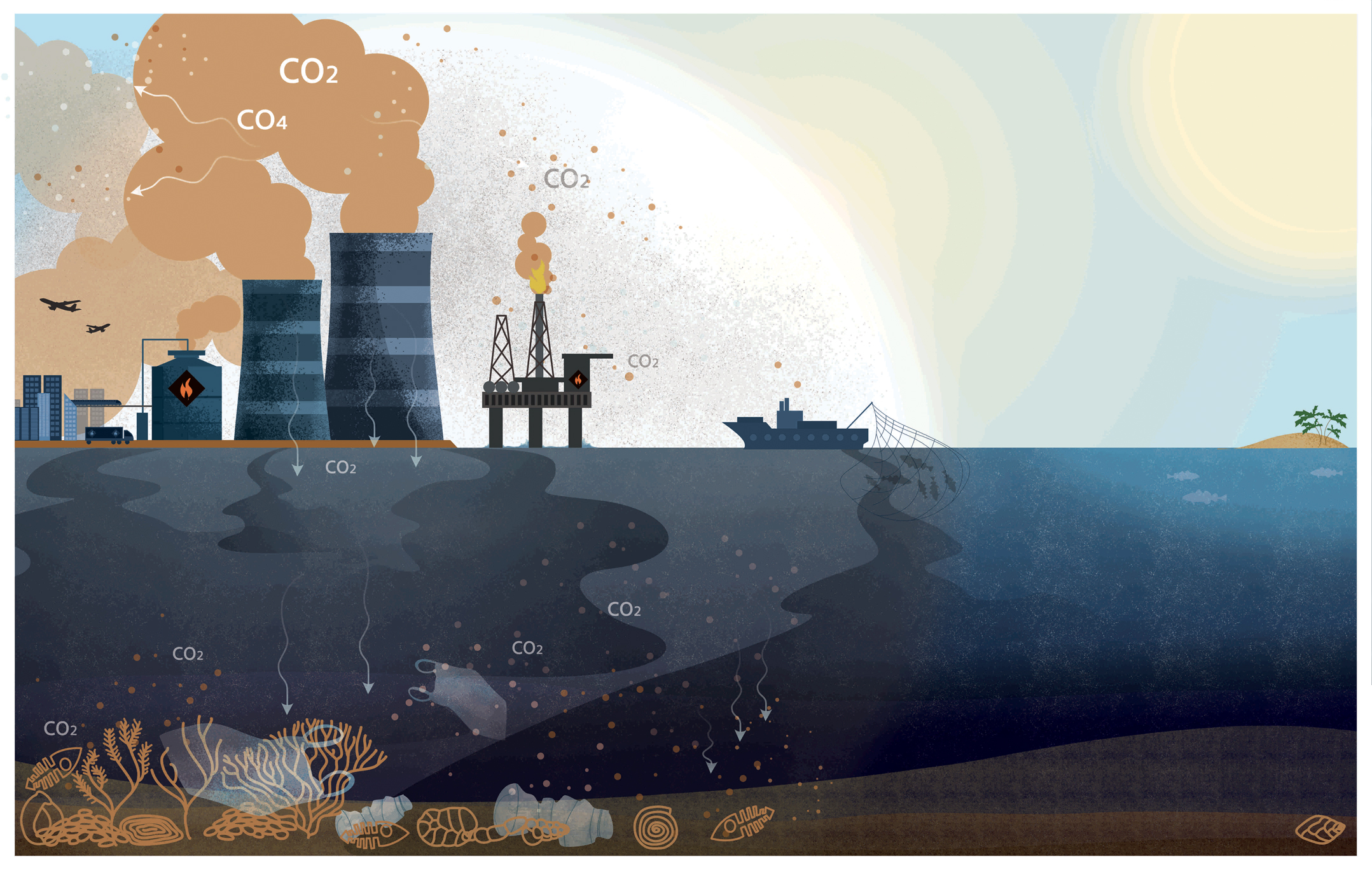What are foraminifera?
Foraminifera are unicellular organisms, made of a single cell, contained
in a shell that can be of different shapes and of different compositions.
Their size varies from a few microns to several millimeters.
However, there are also very large foraminifera in fact called
`Macro-Foraminifera`, measuring up to 10-15 centimetres.
Some are alive in our oceans, others are fossils that can be found in
rocks and on all sand beaches. If you have a stroll on a beach or you build
a sand castle on a beach you literally do this with foraminifera shells 😉

Image: Heike Jane Zimmermann
Where do they live?
Most foraminifera live in all our oceans but can also be found in
rivers or lakes, some of them in soil. As fossils you will find them in rocks, like for example the nummulitic limestone used to build the pyramids, in sediment but also in the sand of our beaches.
Some of them are `PLANKTONIC` which means they float in the water column and get transported by currents and waves. Others are `BENTHIC` which means they live on the seafloor at the bottom of the sea, in the company of many other living organisms of different sizes.
How old are foraminifera?
Foraminifera are very ancient forms of life and way older than the dinosaurs. Foraminifera already existed in the Cambrian period of the Paleozoic. And this is 500 mill years ago! So, they are almost 300 mill years older than the dinosaurs and are still alive today!!

Image: Heike Jane Zimmermann
Why they are important
Foraminifera are very sensitive to physical and chemical environmental changes and therefore ideal for scientists to reconstruct the climate
history of our planet.
By distracting the DNA of foraminifera shells, we will learn about the sea level, temperature, and ocean conditions of the Earth millions of years ago!
Depending on the latitude and depth they live in, they have adapted different characteristics, which is an important aspect that will help understand why fossil foraminifera reveal so much about the habitat they have lived in.
And of course they are also a very important source in the food chain, for eks. invertebrates, fish, shorebirds, and …. yes .. other foraminifera 😉

Image: Heike Jane Zimmermann
Climate Change and
Ocean Acidification
These two factors have a huge impact on foraminifera and of course on all life on our planet. Global warming and the burning of fossils has grown the amount of CO2 in the atmosphere tremendously. Oceans absorb CO2, which is lowering the ph level of the sea water and this process is called `ocean acidification`.
A low ph level affects all lifeforms of our oceans, and also the survival rate of foraminifera by influencing their metabolism, immune system, reproduction and development.

Image: Heike Jane Zimmermann
